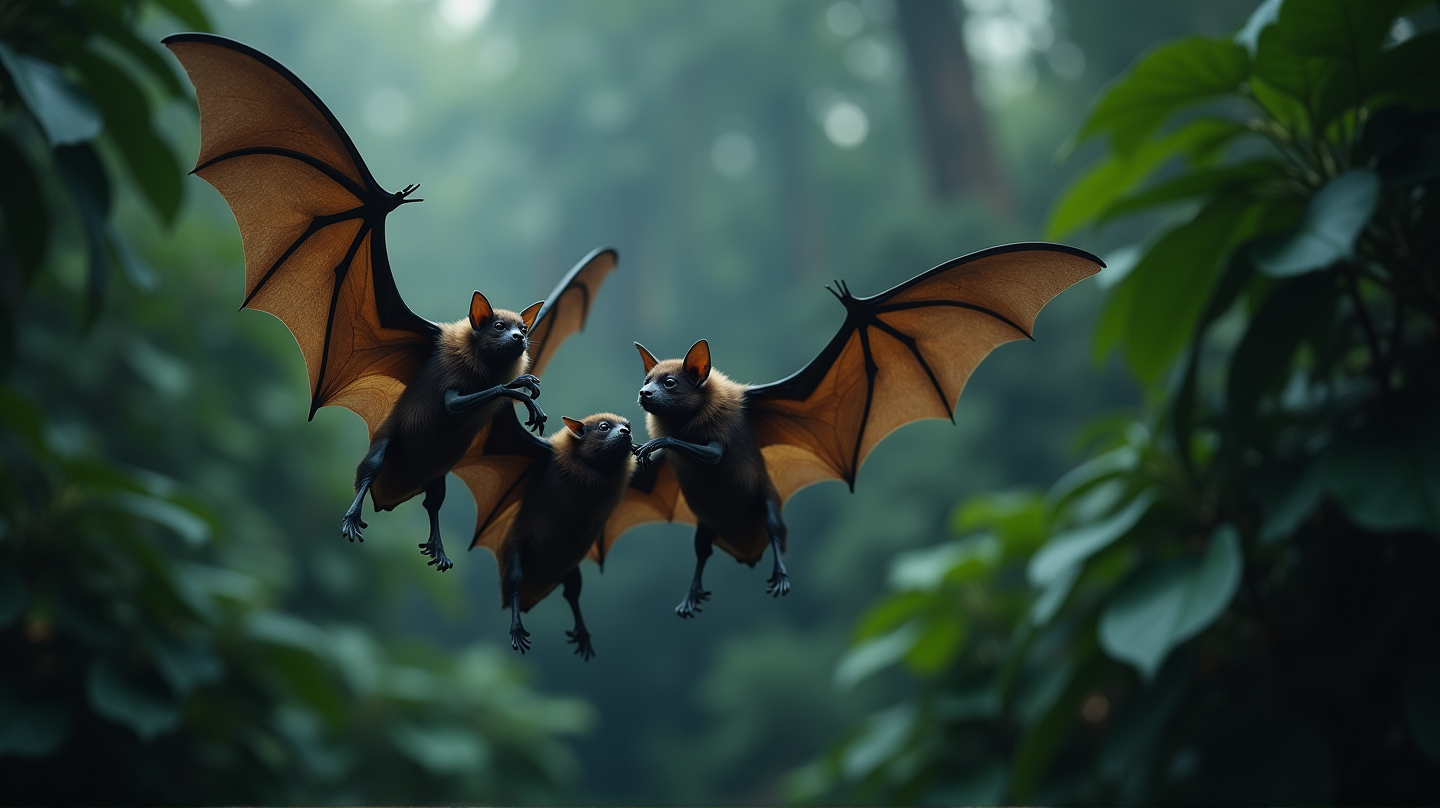In the dense, mystical rainforests of Costa Rica, a groundbreaking discovery has turned the world of bat research on its head. Contrary to previous belief, spectral bats are found to be anything but solitary hunters. This eye-opening study, orchestrated by an international consortium of researchers, has shed light on the complex and cooperative social life these rarely seen vampires of the night lead.
Sharing is Caring: Beyond Solitude
Spectral bats, known for their intimidating size and carnivorous habits, were thought to be lone wolves of the bat world. However, recent observations reveal that these enigmatic creatures engage in heartwarming acts of social generosity. Adult spectral bats openly share their captured prey with younger bats within the roost. This behavior is not mere happenstance; rather, it’s a strategic method of assisting juveniles in transitioning from milk to solid prey. This food-sharing ritual ensures that the young receive adequate nutrition during their formidable growth phase.
Synchronized Soar: Coordinated Hunting Efforts
Spectral bats’ social intrigue doesn’t end with food-sharing. These nocturnal flyers exhibit a remarkable synchronicity when it comes to foraging. Researchers noted groups of bats departing and returning to their roosts with a striking simultaneity, suggesting a form of coordinated hunting strategy. Such orchestration hints at a sophisticated level of communication and mutual cooperation during their nightly hunts.
Beyond Simple Altruism: A Puzzle of Motivation
The motivations behind these cooperative behaviors remain a puzzle awaiting further exploration. Is it a form of reciprocal altruism or more complex social bonding that drives these actions? Insights drawn from studies on other bat species, like the common vampire bat, suggest a blend of direct and indirect benefits for social engagement. According to Natural Science News, the nuanced motivations within the spectral bat community mirror the broader complexities observed in bat social structures.
Sound and Stir: Communication in the Darkness
While the specifics of spectral bats’ communication remain elusive, the observations imply that a delicate symphony of sound and possibly scent guides these nocturnal creatures’ social interactions. In the world of bats, where the dark cloak of night reigns supreme, such communication plays a vital role in fostering cooperation and enhancing hunting efficiency.
Echoes of Cooperation Across Species
In the realm of nocturnal flutterers, spectral bats aren’t the only ones showcasing cooperative social strategies. Other bat species have demonstrated similar tendencies, from eavesdropping on echolocation calls to exacting group hunts. These shared behaviors underscore an evolutionary drive towards social interaction in achieving successful foraging and survival.
The unveiling of the secret life of spectral bats serves as a testament to the richness and complexity of wildlife, challenging our notion of these misunderstood creatures. It beckons new avenues of research and appreciation, as we continue to decipher nature’s captivating mysteries.
